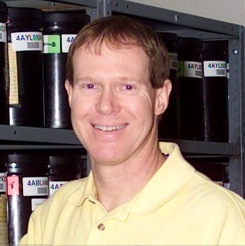
A few months back several members of the National Digital Stewardship Alliance’s Levels of Digital Preservation team presented a short paper at Archiving 2013, The NDSA Levels of Digital Preservation: An Explanation and Uses. While the Levels of Digital Preservation will continue to be refined and improved we are thrilled to report that they are already being used (as designed) as a tool to facilitate planning and decision making about getting to work mitigating the most pressing risks to digital assets.
In this respect, I was happy to hear from John Faundeen, an Archivist with the U.S. Geological Survey who recently used the Levels to inform the development of USGS Digital Science Data Preservation Guidelines. I am thrilled to take this chance to chat with John about what he has found useful about the levels and how he is making use of them.
Trevor: Could you tell us a bit about the particular challenges the USGS Digital Science Data Preservation Guidelines are meant to address? At the end of the day, each our our challenges and use cases have their own particular wrinkles and it is interesting to learn about different requirements and use cases.

John: The USGS is investing a lot of resources in locating or developing best practices for managing, preserving and making available the science data the agency creates. When the NDSA released the draft Levels of Digital Preservation for review it struck a chord with a team assembled in 2012. That group is directly sponsored by our senior management and the areas addressed in the draft readily aligned to our needs.
Trevor: What was it about the NDSA Levels of Digital Preservation that you found useful to bring into your work at USGS? Were there other kinds of digital preservation guidance that you considered making use of too? If so, what was it about the NDSA Levels that was more relevent to your needs?
John: Specifically, the team really liked the progression, from left to right, that an entity can follow to become a better archive or repository. We felt it was unrealistic to simply levy requirements and expect our science offices to be able to achieve them. By having levels, these offices could incrementally begin addressing the important elements necessary to protect digital data.
Trevor: How are your users responding to your the guidelines you put out? Do you have a sense of how this is or isn’t effecting local practices?
John: The Team has spent the last several months applying explanations to the elements that hopefully our science managers can relate to and understand. For example, we were fairly certain that most of science managers would not relate to or understand the term fixity. We, in turn, substituted the phrase checksum, which is not a direct synonym, but would be better understood in our agency. When our reviews and updates are completed, it is expected that the table will become an important part of our updated data management policy for the 9,000+ employees at USGS.
Trevor: Given that you have worked with the Levels a good bit I would be curious to know if you have any comments on them. Are there parts of the Levels that are easier or harder for your users to manage? Are there parts that are easier or harder for your users to understand?
John: Aside from fixity comment above in the Data Integrity area, the Team really felt the Storage and Geographic Location area resonated with our needs. USGS is highly distributed with science data located and being generated from all 50 states as well as territories. Focusing on off-site storage locations was bang on for us.
The metadata area also was very appreciated as we have been trying to educate our staff on the importance of creating complete metadata throughout the lifecycle of the data. Working through FGDC and ISO, we feel this added emphasis will only help our efforts.
Lastly, the File Formats area led us to compile a list of recommended formats for our science staff to concentrate on. If we can accomplish our mission and begin to utilize a limited number of formats, both our users and our own agency will benefit.
Trevor: Do you think your approach, creating a localized set of guidelines for your organization based on the Levels, would be useful for other organizations? In particular, what situations do you think these kinds of localized guidelines can help in?
John: We would hope that our approach, based completely on the NDSA model, would be of some value to other organizations seeking a stepwise approach to better manage their digital assets.